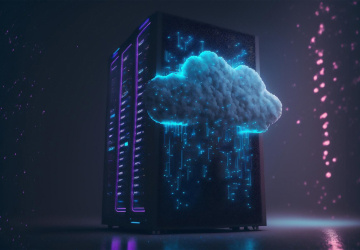
Modernize your communications without risk
Modernize your communications solutions without the risk. Adopt employee collaboration tools that embrace modern ways of working and boost employee productivity and satisfaction. Modernize the way you interact with your customers to increase customer loyalty and retention. Remain secure and compliant and extend your reach with secure global cloud calling capabilities.
Download datasheetModern communications solutions
Communications solutions that support modern ways of working and interacting with customers, all secure and compliant.
Accelerate your automation plans with C1 Elly™, a fully managed generative AI platform that safely activates the full potential of your enterprise data to accelerate your time to automation impact.
Learn moreModernize the way your employees collaborate with each other and get work done, using voice, video, chat, whiteboarding and document collaboration from anywhere and on any device.
Learn moreModernize how your business orchestrates experiences and connects disparate customer touchpoints on any channel to improve customer success and loyalty while fostering profitable, long-term relationships.
Learn moreGet instant global PSTN access with long distance in 234 countries and local presence numbers in 54 countries on a secure, compliant and reliable voice network. Filter out unwanted calls, maintain e911 compliance and verify every caller with C1 Branded Caller ID.
Learn morePut your data to work by effortlessly connecting to all your enterprise data sources, centralizing, normalizing, cleansing your data so that it can be put to work, enabling powerful AI automations with C1 Elly and faster decision-making with AI-powered analytics and insights.
Learn moreAccelerate time to value with out of the box integrations with business applications such as payment solutions, CRM systems, data stores, single sign-on solutions and many more.
Learn moreModernize your communications without risk
All the benefits of modern communications solutions without the risk

Data readiness

Outdated collaboration tools

Poor customer experience

Hiring and retaining IT staff

Lack of AI automations

Secure verified communications
C1 is driving customer success
C1 helped us see things that we weren’t seeing ourselves. They helped us understand how the product can scale for us and grow with us. That’s why we rely on a partner like C1 to help guide us, and that’s exactly what they have done.
Sapidah Shefa
Vice President of Operations, Road Runner Sports
Our partnership with C1 has been very good. We haven't had any issues at all and have always had good luck with our partner in the Avaya system.
Jeff Yancey
CIO, Indiana Spine Group

We no longer worry about outages. C1 continues to help us not just with our telephony platform, but also with our call recording platform and some of the other adjunct pieces that are part of that telephony. I can contain my telco spending and staff because of the C1 partnership.
Jason Skaria
Global CIO, Foundever

The Rise of Cloud and GenAI in Contact Centers White Paper
C1 Edge research reveals that cloud and generative AI are not only being quickly adopted but actually redefining the DNA of customer engagement.
Resources

White paper
The era of AI-powered connected human experiences

Demo
C1 Elly Automate demo

White paper
The Risks of Not Migrating to a Cloud-Based Unified Communications Solution

Datasheet
C1 Fabric

Datasheet
Branded Caller ID

Datasheet
C1 Total Care
Talk to an expert
Talk to an expert now and learn how C1 can add immediate value with C1 Communications.
Contact us
